A note about book names: The Lord of the Rings is often mistakenly called a trilogy because it is published in three volumes. In fact, it is one long novel, divided into six books (plus appendices), two of which appear in each volume. For the sake of navigation, I've divided my summary by the six-book breaks rather than the three-volume titles: The Fellowship of the Ring, The Two Towers, and The Return of the King. The book titles I've used are taken from material found in Christopher Tolkien's excellent series, The History of Middle-Earth. These are slightly different than the book titles used in the recently-published seven-volume "Millennium Edition," mainly because it's a pet peeve of mine when people call January 1, 2000 the start of the new millennium—it's not until January 1, 2001, people!
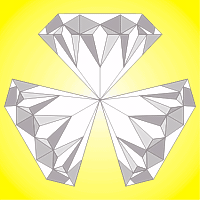

The Poem
Three Rings for the Elven-kings under the sky,
Seven for the Dwarf-lords in their halls of stone,
Nine for Mortal Men doomed to die,
One for the Dark Lord on his dark throne
In the Land of Mordor where the Shadows lie.
Seven for the Dwarf-lords in their halls of stone,
Nine for Mortal Men doomed to die,
One for the Dark Lord on his dark throne
In the Land of Mordor where the Shadows lie.
One Ring to rule them all, One Ring to find them,
One Ring to bring them all and in the darkness bind them
In the Land of Mordor where the Shadows lie.
One Ring to bring them all and in the darkness bind them
In the Land of Mordor where the Shadows lie.
Background
The Lord of the Rings and its precursor, The Hobbit, take place during the Third Age of Middle-Earth. Middle-Earth is a continent on a perpetually medieval fantasy world called Arda, which is filled with magical places, people, and events, and where the forces of Good and Evil vie for dominion. It has always been vague whether Arda is meant to be our "real" world in its prehistory, but I for one prefer to think of it in wholly imaginary terms. The confusion probably stems from the amount of detail and realism that Tolkien puts into the story, in terms of things like weather, climate, geography, and even phases of the moon. The history of Middle-Earth is broken up into four eras, aptly called the Four Ages.
During the First Age, the immortal Elves, the first Children of Ilúvatar (aka. Eru, "the One"... God, basically), awoke by the shores of Cuiviénen in Middle-Earth. Shortly thereafter, they were summoned to Valinor, the Blessed Realm, by the Valar. The Valar are akin to gods in the mythological sense, although they are rarely explicitly called such. In fact, in the creation story of Arda, their role is closer to archangels—witnesses and participants in creation rather than originators. In any case, the Valar pretty much run the show on Arda for old Ilúvatar. Those Elves who made the journey to Valinor (which is located across the western sea from Middle-Earth) became known as the Eldar, or High Elves, while those who remained in Middle-Earth became known as the Sindar, or Elves of the Twilight.

In Valinor, the Eldar learned many arts and crafts from the Valar (but don't think they became a bunch of Martha Stewarts). The greatest of the Eldar was Fëanor, who created three gems of surpassing beauty known as the Silmarils. However, the Silmarils were stolen by an evil Vala called Morgoth, the Dark Enemy of the World, who fled with them to Middle-Earth. Fëanor and a great number of his kinsmen vowed to pursue Morgoth and recover the Silmarils. Upon returning to Middle-Earth, the Eldar discovered that Mortal Men (aka. "Men"), the Second Children of Ilúvatar, had come into the world. Over the following centuries, the Elves and Men battled the forces of Morgoth (consisting of such vile creatures as orcs, trolls, and dragons), but failed to recover the Silmarils. Finally, Beren (a Man) and Lúthien Tinúviel (an Elf maiden) ventured into Morgoth's stronghold of Angband and stole one of the Silmarils from the evil Lord's crown. The great-grandson of Beren and Lúthien was Eärendil the Mariner, who sailed to Valinor to beg the Valar to take up arms against Morgoth. The First Age of Middle-Earth came to an end when Angband was cast down, much of the continent was submerged, and Morgoth himself was bound by the Valar for all eternity. All of this and more is related in detail in The Silmarillion, another fine book.
The Second Age was the time of Númenor, a great island kingdom of Men that lay within sight of Valinor itself. Eärendil had two sons, Elrond and Elros, the Peredhil (Half-Elven). Elrond chose to follow the path of immortal Elvenkind, while Elros chose to live out his life as a Mortal Man (albeit a long-lived one). Elros became the first king of Númenor. Back in Middle-Earth, in the land of Eregion, Elven smiths (led by Celebrimbor, grandson of Fëanor) began forging the Rings of Power, talismans that gave their wearers great supernatural abilities (not the least of which was invisibility). The Elves were unwittingly assisted in their efforts by Sauron, formerly the chief lieutenant of Morgoth. When the Elves had finished their labors, Sauron forged the Ruling Ring in the fires of Mt. Doom. The One Ring gave Sauron dominion over the others, causing them to be corrupted to his service. Only the Three Rings of the Elves remained free, having been forged by Celebrimbor alone, but even they could not be used without Sauron knowing about it. So for a time, the Elf lords set aside their Rings. The forging of the One Ring revealed Sauron's true nature to the Elves, who declared war upon him. The Dark Lord took the fortified land of Mordor to be his stronghold.

Meanwhile, the descendents of Elros, the Edain, became mighty kings among Mankind. The Númenóreans were powerful and just, but eventually came to envy the immortality of the Elves. This left them vulnerable to the lies and deceptions of Sauron. Through Sauron's treachery, Númenor was destroyed and sank beneath the sea. Only a handful of the Edain, led by the noble Elendil and his sons, Isuldur and Anárion, survived the destruction by sailing to Middle-Earth. There, Elendil established a kingdom in the North called Arnor, while Isuldur and Anárion established the kingdom of Gondor in the south. Sauron was believed to have been destroyed in the downfall of Númenor, but in fact, his spirit had survived and returned to Mordor. While the One Ring existed, he could not be utterly destroyed. However, he was no longer able to take on a benevolent appearance.
To combat Sauron's evil, Elendil joined forces with Gil-galad, last of the kings of the Eldar. Together, the forces of the Last Alliance of Elves and Men were able to storm Mordor, driving Sauron's forces before them. Elendil and Gil-galad were slain, but Isuldur cut the Ring from Sauron's hand, breaking his father's sword in the process. Sauron was not killed, however, because Isuldur kept the Ring for himself, rather than destroying it. The first defeat of Sauron signaled the end of the Second Age of Middle-Earth.
While on his way home from the war, Isuldur was ambushed by a company of orcs. He attempted to use the Ring's power of invisibility to escape, but it slipped from his finger while he was swimming across the Anduin river. Now visible, he was slain by an orc's arrow. The Ring lay at the bottom of the river for centuries, until it was accidentally found by two friends, Déagol and Sméagol. Sméagol promptly murdered Déagol and took the Ring for himself. He used his newfound invisibility for thieving and learning secrets. He was reviled by his people, who called him "Gollum," due to his peculiar habit of making gurgling noises in his throat. Eventually getting fed up with this abuse, Sméagol decided to leave home and made his way into the caverns beneath the Misty Mountains, where he thought he could learn the secrets of the world's making. This was in the year 2470 of the Third Age of Middle-Earth.
Characters
(roughly in order of appearance)
| Bilbo Baggins | A hobbit of the Shire. He is recruited by Gandalf the Grey to participate in an adventure. |
| Gandalf the Grey | One of the Istari, or wizards. Aka. Mithrandir, the Grey Pilgrim, Olórin, Tharkún, Stormcrow. Originally one of the Maiar (roughly the equivalent of a demigod or angel), Gandalf was sent to Middle-Earth in mortal guise by the Valar to oppose Sauron. When he arrived in Middle-Earth, Círdan the Shipwright gave him Narya the Great, one of the three Elf Rings. Gandalf is the chief strategist and counselor to the forces of good. |
| Thorin Oakenshield | A Dwarf, son of Thráin, son of Thrór, and rightful king of Erebor, the Lonely Mountain. |
| The Dwarves | The kinsmen and companions of Thorin, who share his quest to destroy the dragon Smaug and restore Thorin's kingdom (and treasure!). In no particular order, they are: Dori, Ori, Nori, Balin, Dwalin, Fili, Kili, Óin, Glóin, Bifor, Bofur, and Bombur. After the events of The Hobbit, only Balin and Glóin really have any part in the story, and they're both pretty small. |
| Tom, Bert & Bill | Three trolls, who attempt to make a meal out of Bilbo and the Dwarves. Gandalf tricks them into being caught in the sunlight, which turns them to stone. Bilbo finds an Elvish short sword among their booty, which he later names Sting. |
| Elrond Halfelven | Lord of Rivendell, aka. Imladris, a hidden refuge of the Elves. Chief of the Eldar and bearer of Vilya, mightiest of the Three Rings. |
| Goblins/Orcs | Hideous creatures made in mockery of the Elves by Morgoth. Nasty enough on their own, their evil natures make them perfect fodder for Sauron's armies. Called "goblins" in The Hobbit, and "orcs" in The Lord of the Rings. It's a linguistic thing. |
| The Great Goblin | King of the goblins of the Misty Mountains. He gets killed. |
| Gollum/Sméagol | A wretched creature roughly the size of a hobbit, with webbed hands and feet, and enlarged eyes that shine with a green glow when he becomes agitated. He loses the Ring to Bilbo, and later emerges from beneath the Misty Mountains to search for his "Precious." |
| Wargs | Big, nasty, black, cunning wolves. The goblins sometimes ride them like horses. |
| Gwaihir the Windlord | Lord of the Eagles, and a friend of Gandalf's. |
| Beorn | A powerful Man with the ability to transform into a bear. |
| Thranduil | The Elvenking, ruler of Mirkwood Forest, and father of Legolas Greenleaf. He and his people are of the Sindar, Elves who did not journey to Valinor. |
| Bard | A descendent of the King of Dale, a kingdom of Men that was destroyed by the dragon, Smaug. |
| Smaug | A dragon with a bad attitude, and the object of Bilbo's long journey. |
| Dáin | Thorin's cousin, ruler of the Dwarves of the Iron Hills. He comes to the Dwarves' assistance when they are besieged. He becomes King Under The Mountain after Thorin is killed in battle. |
| The Sackville-Bagginses | Bilbo's cousins from the wrong side of the Shire. The youngest of these, Lotho, later declares himself the "Chief" of the Shire, but is really just a toady for Saruman, who orders Wormtongue to kill him. |
| Frodo Baggins | Bilbo's nephew and heir. After throwing himself an 111th birthday party, Bilbo gives Frodo the Ring. At the Council of Elrond, Frodo volunteers to be the Ring-Bearer and convey the Ring to its destruction in Mt. Doom. |
| Samwise Gamgee | Frodo's gardener, trusted servant, and inseparable heterosexual companion. He accompanies Frodo on his quest, and for my money, is the real hero of the book. |
| Peregrin Took | One of Frodo's cousins, and more commonly called Pippin. He joins Frodo in his flight from the Shire, and later becomes involved in the War of the Ring. After looking into the Palantír, a crystal ball of immense power, he is taken to Minas Tirith by Gandalf. |
| Meriadoc Brandybuck | Another of Frodo's cousins, who goes by the nickname Merry. He also goes along when Frodo flees the Shire, and later becomes Swordthain to King Théoden of Rohan. Merry assists Éowyn in slaying the Lord of the Nazgûl. |
| Sauron | The Dark Lord of Mordor, former servant of Morgoth, forger of the One Ring, and all-around embodiment of evil. Sauron wants to retrieve the Ring in order to gain complete domination over Middle-Earth. He never actually appears "in person" during the course of the book. |
| The Nazgûls | Also called the Black Riders or the Ringwraiths, the Nazgûls are the bearer of the Nine Rings of Mortal Men, and therefore, are Sauron's most powerful and terrifying servants. In the early part of the story, they pursue the hobbits from the Shire. Later, they lead Sauron's armies in the assault upon the forces of Gondor. The chieftain of the Nazgûls bears a prophecy that no Mortal Man may harm him. |
| Old Man Willow | An ill-tempered tree that traps the hobbits in the Old Forest. Yes, I said a tree. |
| Tom Bombadil | A jolly figure with amazing powers who rescues the hobbits from disaster in the Old Forest, and later saves them from the Barrow-Wights. Exactly who Tom is, where he comes from, and how he fits in to the pantheon of Arda, are never explained. |
| Goldberry | Tom Bombadil's live-in girlfriend, the "daughter of the River" (whatever the heck that means). |
| Barrow-Wights | Evil spirits who dwell in tombs upon the Barrow-Downs. |
| Barliman Butterbur | Owner and proprietor of The Prancing Pony, an inn located in the town of Bree. |
| Bob and Nob | Butterbur's flunkies. |
| Aragorn | Known in Bree as Strider, Aragorn is chieftain of the Dúnedain (aka. the Rangers of the North), and heir to the ancient thrones of Arnor and Gondor. He bears as his token the Sword That Was Broken, which his ancestor Isuldur used to cut the Ring from Sauron's hand. A Man of Destiny, with even more names than Gandalf. He leads the Fellowship after Gandalf's fall. |
| Bill Ferny | A rather nasty resident of Bree, who sells out the hobbits to the Nazgûls. |
| Bill the Pony | A skinny, half-starved old pony sold to the hobbits by Bill Ferny. He proves to be rather steadfast and loyal, to Sam in particular. |
| Glorfindel | An Elf of Elrond's household, sent to search for the hobbits when they don't arrive in Rivendell on time. |
| Legolas Greenleaf | Son of Thranduil, the Elvenking of Mirkwood Forest. He joins the Fellowship of the Ring as the representative of Elvenkind. |
| Gimli | A Dwarf, the son of Glóin (one of Bilbo's old pals). He joins the Fellowship as the representative of the Dwarves. |
| Boromir | A Man, the son of Denethor, the Steward of Gondor. He joins the Fellowship, but succumbs to his desire for the Ring. He later redeems himself by falling in battle defending the hobbits. |
| Saruman | A wizard, formerly the Chief of the White Council, and wise in ring-lore. Gandalf discovers that Saruman has betrayed the Council and seeks to claim the Ring for himself. Saruman's stronghold is Isengard, an ancient tower built by the Númenóreans. His symbol is the White Hand. |
| Arwen Evenstar | The daughter of Elrond, and Aragorn's one true love. |
| Caradhras | A mountain with a bad attitude. Hey, these things happen in epic fantasy novels. See Old Man Willow, above. |
| The Balrog | A demon of fire and darkness from the First Age. In the Mines of Moria, Gandalf falls into an abyss while battling it. Inside joke: in the original edition of AD&D, the Balrog would be classified as a "Type V Demon." |
| Galadriel | The lady of Lothlórien, the Golden Wood. She is one of the Eldar who returned from Valinor with Fëanor to seek the Silmarils. The bearer of Vilya, one of the Three Rings. |
| Celeborn | The lord of Lothlórien. Galadriel's consort. |
| The Uruk-hai | A type of orc bred by Saruman, believed to be at least partially human. They are generally bigger, stronger, smarter, and more ill-tempered than normal orcs. |
| Éomer Éadig | The nephew of King Théoden of Rohan, and a Marshall of the Riders of Rohan. He and Aragorn become great friends and allies. He succeeds Théoden as king. |
| Riders of Rohan | Aka. the Rohirrim, skilled horsemen native to the land of Rohan. Staunch allies of Gondor. |
| Treebeard | Leader of the Ents, immensely strong tree-like creatures who tend Middle-Earth's ancient forests. He finds Merry and Pippin, who convince him to act against Saruman. |
| Théoden Ednew | King of the Mark, lord of Rohan. He is old, and believes himself feeble due to the lies of his counselor, Gríma Wormtongue. Gandalf breaks Wormtongue's hold over Théoden, and the king rides to glory in battle. |
| Gríma Wormtongue | King Théoden's most intimate counselor, until Gandalf exposes him as a toadie for Saruman. He comes to a particularly nasty end. |
| Éowyn | Éomer's sister. She longs to ride into battle, especially after she gets the hots for Aragorn. Éowyn disguises herself as a man and travels with the Riders of Rohan to Gondor, where she kills the Lord of the Nazgûl. She later gets over her thing for Aragorn when she meets Faramir. |
| Faramir | Boromir's brother. He finds Frodo, Sam, and Gollum in Ithilien, a land on the outskirts of Mordor. Faramir does not succumb to the Ring's lure, and helps Frodo on his way. He later returns to Gondor and is wounded by a Nazgûl. He has some "issues" with his father. |
| Shelob | A great monstrous spider that lives in the mountain passes of Mordor. Gollum betrays Frodo and Sam to her, but Sam manages to drive her away. |
| Denethor | The Steward of Gondor, and father of Boromir and Faramir. He takes the death of Boromir (his favorite of the two), pretty hard. When Faramir is wounded by the Nazgû, Denethor tries to immolate both himself and his ailing son, but Faramir is rescued thanks to the timely intervention of Gandalf and Pippin. |
| Beregond | A Citadel Guard who befriends Pippin. He deserts his post to help save Faramir from Denethor's madness. |
| Bergil | Beregond's son, who shows Pippin around the city of Minas Tirith. |
| Prince Imrahil | A Prince of Gondor who leads his people in the Battle of the Pellennor Fields. |
| Elladan & Elrohir | The sons of Elrond. They ride with the Dúnedain to Aragorn's aid. |
| Corsairs of Umbar | Race of evil mariners who are hereditary enemies of Gondor. |
| Ghan-buri-Ghan | One of the Wild Men of the Hills (don't ask), who shows the Rohirrim a shortcut to Minas Tirith. |
| The Mouth of Sauron | A twisted being sent to parley with Gandalf when the armies of Gondor and Rohan march upon the Gates of Mordor.The Hobbit
In the year 2941 of the Third Age of Middle-Earth (1341 of the "Shire Reckoning"), Bilbo Baggins is visited by Gandalf the Grey. The following day, Bilbo's hobbit-hole is virtually invaded by thirteen Dwarves, led by the formidable Thorin Oakenshield. Through some chicanery on Gandalf's part, the Dwarves believe that Bilbo is a professional burglar, whom they have decided to hire to assist them in recovering their stolen horde of treasure. The two catches are: 1) Bilbo doesn't know the first thing about burgling, and 2) the treasure happens to be in the possession of a vicious dragon named Smaug. Nonetheless, Bilbo sets off with the Dwarves for Erebor, the Lonely Mountain, which stands on the far edge of the Wilderlands.
After a brief encounter with some trolls (during which Bilbo nearly manages to get the entire group eaten), the adventurers arrive at the home of Elrond Halfelven. The Elf lord discovers "moon letters" on a map of Erebor in Thorin's possession, which tell of a secret side entrance into the mountain kingdom. After leaving Elrond's house, the Dwarves, wizard, and hobbit attempt to cross the Misty Mountains. When they take shelter in a cave, however, they are captured by goblins. Thanks to some timely magic on Gandalf's part (including killing the "Great Goblin"), the Dwarves escape. In the confusion of the getaway, Bilbo becomes separated from the party.
Alone in the tunnels, Bilbo makes his way by the pale light of his sword (it glows in proximity to goblins) towards an underground lake. As he feels his way along, he comes across a ring, which he absentmindedly puts in his pocket. Shortly thereafter, he meets Gollum, not knowing that the ring belongs to the toadlike creature. Gollum challenges Bilbo to a riddle game: if Bilbo wins, Gollum will show him the way out of the caves, but if Gollum wins, Bilbo will be Gollum's dinner. Bilbo and Gollum each answer several riddles, but then Bilbo becomes stuck for a riddle to ask. At that moment, he feels the ring in his pocket and wonders out loud, "What have I got in my pocket?" Gollum believes that this question is meant to be a riddle, and is rather perturbed when he can't guess the answer. He decides to kill and eat Bilbo anyway, but paddles back to his island to get the ring first, so he can throttle Bilbo in invisible safety. When Gollum begins shrieking over the loss of the ring, Bilbo realizes the jig is up and beats a hasty retreat. Gollum surmises that Bilbo knows the way out after all and sets out in pursuit. Just as Gollum is about to catch up with him, Bilbo accidentally puts on the ring and is surprised when the loathsome creature runs right past him. Bilbo follows the slimy thing, and from listening to Gollum talking to himself, learns: 1) that Gollum is leading him to the "back door," and 2) that the ring is magical. The back door is guarded by goblins, and Gollum dares go no further. As Bilbo makes his escape, he hears Gollum crying out, "Thief Baggins! We hates it forever!"
Once outside, Bilbo quickly finds the wizard and Dwarves, who have also managed to escape from the goblins' demenses. The goblins and wargs pursue them, but the party is rescued by eagles, who bring them to the domain of Beorn, whom Gandalf describes as a "skin-changer." Beorn is not fond of visitors, but the wizard's tale of their journey makes him decide to help. The next leg of the journey is through the fearful Mirkwood Forest, and to the Dwarves' dismay, Gandalf announces that he will no longer be journeying with them. As the group crosses the forest, they meet up with several misadventures, including a battle with giant spiders and imprisonment by the Wood Elves. Through the use of his quick wits, the ring, and his short sword (named Sting after the battle with the spiders), Bilbo manages to save the day in each situation, finally bringing the Dwarves to Esgaroth, a town built on platforms over Long Lake. The Lake-town is the last remnant of the ancient kingdom of Dale.
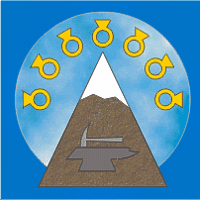
Assisted by the lake-men, the adventurers travel to the Lonely Mountain. After some fruitless searching, Bilbo locates the secret door indicated on Thorin's map. Bilbo is reluctantly drafted to be the first one to explore the tunnel, and is ordered by Thorin to "burgle something." Summoning up his courage, Bilbo puts on his ring and makes his way into the dragon's lair. After a bit of verbal sparring, Bilbo snatches a golden cup and makes a run for it. This makes Smaug pretty darn angry. On a subsequent trip down the tunnel, Bilbo gives evasive answers to the dragon's questions, and accidentally leads the dragon to believe that he is a native of Lake-town. Smaug smashes the side of the mountain (the Dwarves, warned by the hobbit, manage to duck inside the tunnel just in time), and flies off to destroy Esgaroth.
Smaug does just that, causing immense death and destructions to the citizens of Esgaroth. In the midst of the crisis, however, a thrush flies to a guardsman named Bard, and gives him a vital bit of information that was uncovered by Bilbo. Specifically, the dragon has an unarmored spot on his underside. Using the Black Arrow, an heirloom of the long-lost kings of Dale, Bard is able to hit Smaug's vulnerable patch and slay the wicked wyrm. The dragon's corpse crashes onto Lake-town, destroying it utterly.
Meanwhile, the hobbit and Dwarves explore the Lonely Mountain, fearing the dragon's return. Bilbo finds the Arkenstone, a gem of great value, but keeps it hidden from the Dwarves. The thrush brings them news of the dragon's demise and the destitution of Lake-town. Thorin, however, turns out to be a greedy so-and-so, and orders that the mountain be barricaded against the Men, who will certainly want some of the treasure. Bilbo is baffled by this attitude. Sure enough, an army of Men led by Bard arrives, along with an army of Elves led by Thranduil, the Elvenking of Mirkwood Forest. Faced with Thorin's stubbornness, the two armies lay siege to Erebor. Bilbo tries to salvage the situation by giving the Arkenstone to Bard and the Elvenking, but his efforts are stymied by the arrival of an army of Dwarves under the leadership of Thorin's cousin Dáin. The battle is about to be joined when Gandalf suddenly appears in the middle of the field, and warns all three groups of the approach of an army of goblins, who have been stirred up by the adventurers' activities in the Misty Mountains. The Men, Elves, and Dwarves join forces against the goblins, but even their combined strength does not seem to be enough to withstand the fierce onslaught. At the last moment, however, an army of eagles swoops down and turns the tide of battle. Bilbo misses the end of the fight, as he is accidentally knocked out by a falling rock.
When he awakens, he is taken to Thorin, who is dying. Thorin repents and parts in friendship with Bilbo. Dáin is now King Under The Mountain, and he agreeably gives the Men and Elves a fair portion of the treasure. Bard sets about the task of rebuilding the kingdom of Dale. The Arkenstone is laid to rest with Thorin in the deepest part of the mountain. Bilbo returns home, accompanied by Gandalf. He arrives to find that his cousins, theSackville-Bagginses, have had him declared legally dead and are auctioning off his personal belongings. Bilbo manages to set things right, but is no longer respected by his no-nonsense neighbors. Nevertheless, he remains happy and contented.
Book I: The Return of the Shadow
Sixty years after the events depicted in The Hobbit, Bilbo Baggins throws a huge birthday party to celebrate his 111th birthday, as well as the 33rd birthday of his nephew and heir, Frodo Baggins. At the height of the feast, Bilbo gives a farewell speech and vanishes, causing much uproar and consternation among his guests. Later, as Bilbo prepares to leave the Shire for once and for all, Gandalf appears and convinces him to leave the ring for Frodo, along with the rest of his inheritance. Bilbo does so, albeit reluctantly. Gandalf agrees to look in on Frodo from time to time.

Seventeen years pass, and Frodo begins to wonder what the hell ever happened to Bilbo. Gandalf shows up after a long absence and informs him that Bilbo's ring is, in fact, the One Ring, and that if he likes his skin the way it is (that is, intact), he'd better head for the hills. Sauron and his boys are sure to come looking for it. Given this dire warning, Frodo procrastinates for several months about leaving the Shire. When he, his gardener Sam, and his cousins Merry and Pippin, finally do make a break for it, they are pursued by mysterious Black Riders. The hobbits try to take a shortcut through an eerie woodland called the Old Forest, but they are captured by an evil willow tree and subsequently rescued by Tom Bombadil. Tom is a spritely fellow with a blue hat and yellow boots. He and Goldberry give the hobbits shelter and warn them about the evil spirits of the Barrow-downs. They blunder into trouble with the Barrow-Wights anyway. Luckily, they are still within Tom's domain when this happens, and he comes to their rescue again. The hobbits loot the Barrows before continuing on their way, each taking a short sword left over from the kingdom of Arnor's ancient war against the Nazgûls.
The hobbits' next stop is the village of Bree. There, at an inn called The Prancing Pony, they meet a Man named Strider, whom the innkeeper describes as a "Ranger." Frodo accidentally puts on the Ring in public, causing quite a stir. The hobbits have to leave town, and Strider offers to be their guide to Rivendell (where they were supposed to have met up with Gandalf). Frodo is suspicious of the Ranger until Butterbur produces a letter from Gandalf, which the portly innkeeper forgot to have delivered to Frodo in the Shire. In the letter, Gandalf warns Frodo about the Black Riders and informs him that Strider is actually Aragorn, chieftain of the Dúnedain. Narrowly escaping from the Black Riders in Bree, the hobbits are forced to purchase a pony from Bill Ferny, a suspicious character. The party heads into the wilderness, taking a roundabout route to Rivendell. At a hill known as Weathertop, the party is ambushed by the Black Riders, and Frodo is wounded. As the group continues toward Rivendell, Frodo becomes increasingly ill, due to the evil nature of the dagger with which he was stabbed. Elrond, meanwhile, has sent people out looking for them, and one of these, an Elf lord named Glorfindel, finds them. Thanks to Glorfindel's horse (and some magical help from Elrond and Gandalf), Frodo is able to get by the Black Riders at the Ford of Bruinen and finally arrive at Elrond's stronghold. However, his Barrow sword is broken in the confrontation.
Book II: The Fellowship of the Ring
When Frodo awakens in Rivendell, the first person he meets is Gandalf, who chastises him for all the boneheaded moves he's made so far. Frodo is then reunited with Bilbo, who has been living at Rivendell since he left at the beginning of Book I.
Frodo and Bilbo are summoned to the Council of Elrond, where the history and fate of the Ring are debated. The following bits of information are revealed, not necessarily in this order. Glóin (one of Bilbo's old Dwarf pals) reports that agents of Sauron have been nosing around Erebor looking for a hobbit named Baggins. Legolas reports that Gollum (who had been held in the custody of the Wood Elves for a bit) has escaped. Boromir reports that he had a dream in which he was told to seek the Sword That Was Broken, as well as "Isuldur's Bane" (the Ring). Aragorn shows off his sword, and reports that now that Isuldur's Bane has been found, the sword will be reforged. Gandalf reports that the former leader of the White Council, Saruman, has turned traitor and had taken Gandalf prisoner (he escaped with some help from his old buddy, Gwaihir, the Lord of the Eagles). Finally, they bring out the Ring and debate what the heck to do with the darned thing. After considering and rejecting several unworkable options, the Council decides that their only chance is to send the Ring to be destroyed in Mount Doom. Unfortunately, Mount Doom is located right smack dab in the center of Mordor, the land of Sauron. Frodo volunteers to be the Ring-Bearer.
Since the mission will rely on stealth more than brute strength, Elrond decides that a small group will be sent with Frodo. All of the "free people" are to be represented in the Fellowship of the Ring: Gandalf leads the group; Aragorn and Boromir go on behalf of Men; Gimli, son of Glóin, for the Dwarves; Legolas for the Elves; and Frodo, Sam, Merry, and Pippin for the hobbits. Before they leave, Bilbo gives Frodo Sting (his Elvish sword) and a chain mail shirt made of mithril silver, a very tough, beautiful, and durable metal.
The Fellowship departs from Rivendell. They are unable to pass over the Misty Mountains due to the malice of Caradhras, and are pursued by wargs. Gandalf has no option but to lead the group to the gate of Moria. An ancient underground dwarven kingdom, Moria has now fallen into evil. The group encounters a demonic creature of fire and shadow called a Balrog. Gandalf attempts to hold the monster at bay while the others flee, and falls into a chasm, dragging the Balrog down with him.
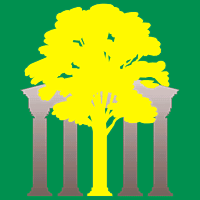
The remainder of the Fellowship, now led by Aragorn, escapes from Moria and makes its way to Lothlórien, an Elvish kingdom ruled by the Lady Galadriel and her consort, Celeborn. The Elves give them shelter and supplies. Galadriel shows Frodo and Sam her magic mirror, in which they see strange visions. Just before the Fellowship departs, Galadriel gives gifts to the party. Among these are Elvish cloaks that provide almost supernatural camouflage. To Frodo, she gives a glass phial in which a glimmer of the light of the Silmarils has been captures. To Sam, she gives a box of dirt.
The Fellowship travels downriver by boat. Frodo and Aragorn each learn that they are being tailed by Gollum. Finally, they arrive at the Falls of Rauros, where they must decide either to go directly east to Mordor, or west to Gondor first. Frodo knows that it is his duty to go to Mordor, but he is afraid for his companions. As Frodo ponders his course of action, he is approached by Boromir, who urges the hobbit to go to Minas Tirith, the capital city of Gondor. When Frodo explains that he cannot, Boromir goes nuts and tries to grab the Ring. Frodo escapes from his clutches by putting on the Ring, and decides to leave for Mordor on his own, right away. Boromir regains his senses and informs the rest of the Fellowship that Frodo has disappeared. Everybody scatters in confusion, except Aragorn, who alone keeps his head. He orders Boromir to follow Merry and Pippin to keep them safe, then heads off to find Frodo. Sam realizes what Frodo is up to, and intercepts his master just as Frodo is casting off to cross the river. Frodo wants Sam to stay behind, but Sam insists on going with Frodo to Mordor.
Book III: The Treason of Isengard
Aragorn follows Frodo's trail, but is too late to catch him. Suddenly, he hears Boromir's horn blowing, calling for help. He finds Boromir dying. Boromir confesses his crime and asks Aragorn to go to Minas Tirith and aid his people. Before expiring, the warrior also tells Aragorn that Merry and Pippin have been captured by a group of orcs. Aragorn, Legolas, and Gimli give Boromir a viking's funeral, setting him adrift on a boat on the river. Aragorn examines the traces left behind by Frodo and Sam, deducing what they have done. The quest of the Ring-Bearer is no longer in their hands, so the Man, Dwarf, and Elf begin a long chase to catch the orcs and rescue the hobbits.
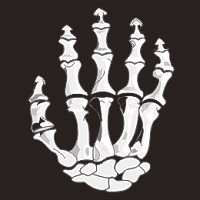
The orcs carrying Merry and Pippin are Uruk-hai, servants of Saruman. The hobbits are dragged across the land of Rohan, en route to Isengard, Saruman's stronghold. Due to a combination of luck, quick thinking, and their Elf-cloaks, the pair manage to escape from the orc-band just before the Uruk-hai are slaughtered by the Riders of Rohan (aka. the Rohirrim). Merry and Pippin make their way into the mysterious Fangorn Forest. There, they meet Treebeard the Ent. Their report of Saruman's activities stirs Treebeard into action, and he in turn recruits the other Ents to join in the fight against Saruman.
Aragorn, Legolas, and Gimli meet the Riders and their leader, Éomer, shortly after the battle. Despite the Riders' report that no one survived, the hunters continue to the site of the slaughter, hoping to find some trace of their companions. Just inside Fangorn, the trio meets Gandalf, who has returned from the dead more powerful than before. Since Saruman has become corrupt, Gandalf is now chief of the Istari, and has been transformed into Gandalf the White. He assures his friends that the hobbits are in good hands and leads them to Meduseld, the home of King Théoden of Rohan. Gandalf breaks the spell of the slimy Wormtongue, restoring Théoden to his old self. Aragorn meets Éowyn, Éomer's sister, who immediately gets the hots for him (he is the Heir of Elendil, after all). Théoden resolves to lead his troops into battle against the forces of Saruman. There is a terrific battle in the ancient stronghold of Helm's Deep, which the army of Rohan wins thanks to the timely appearance of a forest of walking trees.
The morning after the battle, Gandalf, Théoden, Aragorn, Gimli, Legolas, Éomer, and a detachment of Rohirrim travel to Isengard, which they find in ruins. Merry and Pippin greet the travelers and there is a joyful reunion of the friends. The two hobbits describe the attack of the Ents on Isengard, and report that Saruman and Wormtongue have taken refuge in Orthanc, the Númenórean tower that stands in the center of Isengard (note: this is the first of the "Two Towers" that give the second volume its name). The Ents were also responsible for sending the trees that helped win the battle at Helm's Deep. Gandalf and company go to the tower to parley with the fallen wizard. In the confrontation, Gandalf breaks Saruman's staff and strips him of most of his power. While they talk, Wormtongue throws an object down from the tower. It is a palantír, an ancient crystal ball originally brought to Middle-Earth by Elendil. Pippin retrieves the palantír and brings it to Gandalf.
As the group rides back to Helm's Deep, Pippin is overwhelmed by curiosity and swipes the palantír from Gandalf. Looking into it, he is confronted by Sauron himself. Gandalf realizes what has happened and comes to the rescue. Moments later, a Nazgûl, now mounted on a winged monster, flies overhead. Gandalf entrusts the palantír to Aragorn and, taking Pippin along for safekeeping, rides on ahead to Gondor.
Book IV: The Journey to Mordor
As Frodo and Sam try to escape the treacherous hills on the east side of the river, they encounter Gollum. Frodo tames him and forces him to guide the hobbits to the gate of Mordor. After a harrowing passage of the Dead Marshes, the little group reaches the entrance to Mordor. However, the gate is closed tight and swarming with orcs. Gollum claims that he knows of a less-guarded entrance to Mordor in the mountain passes to the south, and offers to take Frodo there. As they continue on their way, Sam becomes increasingly aware of a conflict between two different parts of Gollum's personality. The "Sméagol" half seems genuinely reformed, but the "Gollum" half is just as treacherous as ever. The one thing that both halves seem to agree on is that they want their "Precious" back.
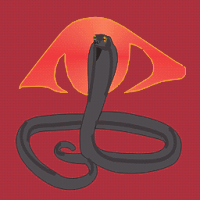
While passing through Ithilien, a forestland on the borders of Mordor, Frodo and Sam are captured by the Rangers of Ithilien, led by Faramir, Boromir's younger brother. Faramir learns of the Ring, and Boromir's reaction to it, but does not succumb to its temptation. When the Rangers capture Gollum, Frodo bargains for his release. With Faramir's blessing, the trio makes their way to the vicinity of Minas Morgul, the city of the Nazgûl (note: it's the second of the "Two Towers"). As they pass by, they see a great host issue forth from the black city and head towards Gondor. Frodo is nearly found out when he sees the Lord of the Nazgûl, who senses the power of the Ring nearby.
Gollum's path leads the hobbits far up into the mountains. They come to the entrance of a dark tunnel, which Gollum enters. Frodo and Sam are loathe to follow. They muster up their courage and pass within, but quickly discover that the passage is a black maze and that their guide has deserted them. By using Galadriel's phial and Sting, Frodo and Sam escape from the maze, but are attacked by Shelob, a giant spider. Sam rushes to Frodo's aid, but is ambushed by Gollum. By the time Sam extricates himself from Gollum's grasp, Frodo has been poisoned. Sam take Sting and drives the spider away, but the damage is done. Frodo is dead. After some deliberation, Sam takes the Ring, resolved to continue the quest on his own. No sooner has he left Frodo's side, than two groups of orcs converge on the site of the battle. Using the Ring, Sam overhears the orcs, who say that Frodo is not dead, only comatose. Sam immediately abandons the quest to rescue Frodo from the orcs, but he is too late. The orcs carry Frodo's inert form into the great tower of Cirith Ungol, as Sam knocks himself silly trying to gain entrance.
Book V: The War of the Ring
Gandalf and Pippin arrive in Minas Tirith, the chief city of Gondor. They meet with Denethor, the Steward of Gondor, who already knows that Boromir is dead. The fallen warrior's broken horn was found by Faramir. Pippin describes Boromir's valor, and offers his sword to Denethor, who makes him a Citadel Guard. While Gandalf and Denethor exchange information, Pippin is shown around the city by Beregond, a Citadel Guard, and his son, Bergil. Together, they watch the forces of Gondor gather, including Prince Imrahil. The following day, a great darkness spreads across the sky.
On the road from Isengard, Aragorn, Théoden, and company, are met by a mounted force of the Dúnedain, accompanied by the Sons of Elrond. Based on messages they bring, Aragorn, Gimli, Legolas, and the Dúnedain take leave of Théoden and Merry, riding on ahead. They arrive at Dunharrow, a Rohirrim stronghold at the foot of the mountains dividing Rohan and Gondor. Aragorn shows himself to Sauron in the palantír, hoping to distract the Dark Lord. He succeeds in wrenching control of the stone to his own will, but sees a great force of Corsairs gathering in the south to attack Gondor. The only way he can bring help in time is to take the Paths of the Dead, a tunnel through the mountains that is fraught with peril. Despite Éowyn's attempts to convince him otherwise (and refusing her request to ride with him), Aragorn leads the Rangers (and Legolas and Gimli) through the mountains to the Stone of Erech. There, he commands a host of dead warriors who are bound to obey the Heir of Elendil to follow him to Gondor.
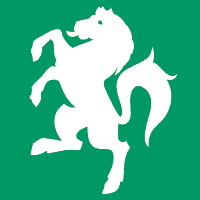
Merry has remained with Théoden and the Rohirrim, and becomes the king's esquire. They arrive in Dunharrow the afternoon after Aragorn left. Éowyn is quite bummed, both because she has the hots for Aragorn, and because she longs for glory in battle. Merry is given armor and stuff, but is not allowed to ride with the Rohirrim to Gondor, because he's too little. A rider named Dernhelm lets Merry secretly hitch a ride.
Minas Tirith is besieged. The Lord of the Nazgûl's host surrounds the city. Faramir manages to make it back, and reports on his meeting with Frodo. Denethor is pissed that Faramir had the Ring in his hands and didn't bring it to Minas Tirith. Gandalf reassures Faramir that he did the right thing. Faramir leads a sortie against the evil host, and is wounded by one of the Black Riders, who you will recall are now riding on flying beasts. The gate to the city is broken, and Gandalf confronts the Lord of the Nazgûl. Before either of them can do much more than posture a bit, the darkness over the city breaks, the horns of the Rohirrim are heard in the distance, and the Nazgûl chieftain withdraws from the gates.
Merry rides with the Rohirrim to Gondor. They are helped past the evil sentries by the Wild Men of the Hills. They arrive at Minas Tirith just as dawn is breaking. Théoden boldly leads the Riders into battle, but is cut down by the Lord of the Nazgûl. Everyone flees before the Black Rider except Dernhelm, now revealed to be Éowyn in disguise (surprise!). Unnoticed in the confusion, Merry stabs the Lord in the foot with the sword he got in the Barrow (way back in Book I), which somehow makes the Ringwraith's spectral flesh substantial. Éowyn seizes the opporutnity and kills the Lord of the Nazgûl, fulfilling the prophecy that no "man" could defeat him. Théoden lives long enough to name Éomer his heir, then dies. Éomer then spots Éowyn (who appears to be dead from the strain of killing the Witch-King), goes nuts, and leads his troops back into the battle.

It appears that no amount of berserk rage is going to do any good, however, because a black fleet comes up the river, apparently bearing reinforcements for the evil army. But just as things are looking their bleakest, the wind unfurls the lead ship's flag, revealing the standard of Elendil (which only the king of Gondor may use). Yes, it's Aragorn, Legolas, Gimli, the Dúnedain, and a bunch of other guys, come to the rescue. Aragorn and Éomer meet again, as kings in the midst of the hosts of Mordor, as had been previously prophesized. Much death and destruction ensue.
Back at the city gates, Pippin catches up with Gandalf just as the wizard is about to pursue the Lord of the Nazgûl onto the field. Denethor, it seems, has lost his marbles and is going to incinerate both himself and the wounded Faramir. Gandalf follows Pippin to the Houses of the Dead and saves Faramir, although Denethor dies by hurling himself onto a blazing pyre. It turns out that he also had a palantír, saw Aragorn's fleet coming, and figured they were all doomed. Faramir is taken to the Houses of Healing, where Gandalf spends the rest of the battle tending to the wounded. Later, Pippin finds Merry wandering in a delerium. One of the old women at the Houses of Healing remarks that the kings of Gondor were renowned for their healing prowess. Gandalf sends for Aragorn, who arrives incognito because he doesn't want to officially enter the city until he's actually been crowned king (you have to do these things by the book, you know). Aragorn brings Faramir, Éowyn, and Merry back from the brink of death.
The generals hold a debate to figure out what to do next. They've beaten one of Sauron's armies, but they know the next one will be bigger, and the one after that, ad nauseum. Their only real hope is to draw as many troops out of Mordor as possible, so the Ring-Bearer will have a chance to destroy the Ring. They decide to march on Mordor. At the gates of Mordor, they are greeted by a weirdo calling himself the Mouth of Sauron, who shows them Frodo's mithril shirt, Sam's sword, and some other things belonging to the hobbits. Naturally, this leads them to the conclusion that Sauron has the Ring. Rather than submit, however, Gandalf defies the Mouth, takes back the hobbits' stuff, and calls Sauron nasty names. At this, a truly huge army pours out of the Gates and attacks the good guys. Pippin (the only hobbit there at the time) finds himself fighting with a troll. Things look grim, but Pippin hears someone shouting, "The Eagles are coming!" which reminds him of Bilbo's adventure. Then he gets knocked out. Y'know, I just realized that three out of the six books end with a hobbit losing consciousness: I (Frodo), IV (Sam), and V (Pippin). How odd.
Book VI: The Return of the King
Sam recovers his wits and makes his way into the tower. There, he finds that the squabbling orcs have done most of his dirty work, killing each other over what to do with Frodo's sword, chain mail, and cloak. One orc gets away with the stuff. Sam finds Frodo in the very top of the tower and gives him back the Ring. They disguise themselves as orcs and press on, escaping the tower just as a Nazgûl shows up to find out what the heck's going on.
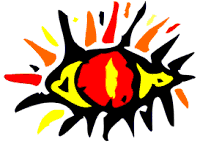
The journey across Mordor is fraught with danger, not the least of which is the growing puissance of the Ring, which is working its evil magic on Frodo. Sam keeps them going. Finally, they arrive at the foot of Mount Doom. Sam carries Frodo piggyback. They are jumped by Gollum, which snaps Frodo out of his stupor. He cows Gollum, then proceeds up the mountain, leaving Sam to deal with the slimy bugger. Gollum begs Sam for mercy, claiming that when the Ring is destroyed, he too will die. Sam tells him to beat it, then follows Frodo. Inside the Cracks of Doom, he catches up with Frodo, just as his master puts on the Ring and claims it for his own. Before Sam can react, dogged old Gollum jumps the invisible Frodo (whom we assume Gollum can see because of his long affinity for the Ring... or maybe not, maybe he just smells him). The two wrestle a bit, and then Gollum bites Frodo's finger off, Ring and all. In his jubilation, Gollum steps too close to the edge of the crater and falls into the fire. The Ring is destroyed. Sam and Frodo (now completely back to his old self, more or less) leave the cavern, but all hell is breaking loose, as are large portions of the mountain. They bid each other farewell and swoon. Fire and brimstone will do that.
Back at the battle, Sauron's forces suddenly lose heart and make a break for it. Gandalf realizes what's happened and calls in his old buddy, the Lord of the Eagles. They quickly fly to Mount Doom and scoop up Frodo and Sam just before the hobbits fall into a lava flow. When the pair revive, they are honored by the assembled hosts of Gondor and Rohan. The army returns to Minas Tirth, where Aragorn is welcomed as king by the people. The Third Age of Middle-Earth is ended with Sauron's defeat, and now the Fourth Age (aka. the Age of Men) has begun (remember when I said way back in the background section that there were four ages?).
Meanwhile, Faramir and Éowyn (and Merry) have completely recovered and fallen in love (Faramir and Éowyn, that is... Merry has nothing to do with the love part). Everything is now hunky-dory. Later, Aragorn finds a seedling of the White Tree (the living symbol of Númenor, and subsequently of the combined kingdoms of Gondor and Arnor), and gets married to Arwen, Elrond's daughter.
The hobbits begin the long journey back to the Shire. Along the way, they meet Saruman and Wormtongue, who have become beggars. The defrocked wizard makes some dire utterings about the Shire, then goes along his way. The party gets back to Rivendell just in time for Bilbo's birthday. After spending some time with the old hobbit, Frodo, Sam, Merry, and Pippin head back to the Shire. Gandalf goes with them as far as Bree, but then leaves to have a heart-to-heart talk with Tom Bombadil (reinforcing the theory that Tom is some deity or demideity in disguise, much like Gandalf himself).
At the gates of the Shire, the four hobbits learn that ruffians, apparently acting under the orders of Frodo's cousin, have overrun the place. The mill has been torn down, factories have been built, and assorted atrocities have been committed. The four heroes, particularly Merry and Pippin, call the hobbit-folk to arms and defeat the blackguards (who, upon closer examination, bear a striking resemblance to the half-orc creations of Saruman that Merry and Pippin saw at Isengard). The last step in overthrowing the bullies is to roust out their leader, who turns out to be Saruman, not Frodo's cousin at all. Not wishing to kill such a powerful being (who knows what sort of curse you could bring down on yourself that way?), Frodo orders Saruman to leave the Shire. However, the badly abused Wormtongue pulls a knife and slits the wizard's throat. Before Frodo can stop them, hobbit archers slay the wretched git. The War of the Ring ends on Frodo's front porch.
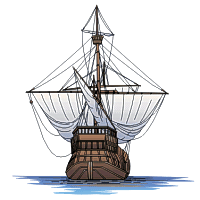
Remember the box of dirt that Galadriel gave to Sam? He uses the special magic Elf dirt to repair the damage done to the Shire. There is also a seed in the box, which he plants in the meadow over Bag End. It grows into a huge "mallorn" tree like those in Lórien. He marries his childhood sweetheart, has a couple of kids, and they all move in with Frodo. Frodo, however, is not a happy camper. Being stabbed, poisoned, bit, burned, and having his mind warped by the ultimate token of evil, have all left him with a sort of post-traumatic-epic-fantasy-shock-syndrome. After a couple of years, he and Sam ride off to the Gray Havens, where the Elves routinely ship off to Valinor, never to return. Along the way, they meet up with Gandalf, Elrond, Galadriel, and Bilbo. It seems that the remaining Ring-Bearers are all going to leave Middle-Earth and sail to Valinor, where they can find peace. Merry and Pippin show up to wish them bon voyage, and to keep Sam company on his trip home. As the grey Elf ship vanishes into the mists, Frodo holds the phial of Galadriel aloft. Sam goes home.
Appendices.
There are six appendices at the end of The Lord of the Rings:
There are also some indices regarding where you can find people, places, and things mentioned in the book.
Bored of the Rings
If you go to the Ring Game, you are going to hear people referring to characters and places by names other than those that appear in The Lord of the Rings. Most of these can be traced to the tremendously funny parody of Tolkien's books entitled Bored of the Rings, by the Harvard Lampoon. In this book, Frito Bugger (son of Dildo Bugger) must destroy the Great Dingus in the dreaded Zazu Pits of Fordor. He is accompanied by Spam, Moxie, Pepsi, Goodgulf, Arrowroot son of Arrowshirt (true king of Twodor), Gimlet, Legolam, and Bromosel. They are pursued by the forces of Sorhed, betrayed by the evil entrepreneur Serutan, and trapped by Schlob (Sorhed's bloated ex-wife). Frito and Spam destroy the Nasty Thingamabob by using the oily Goddam as a dead weight and hurling him into a tar pit. Arrowroot marries Eorache (daughter of Eorlobe) and everybody goes home to play Scrabble.
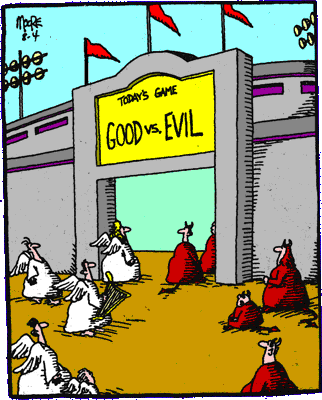 The Ring Game
What exactly is Ring Game? It is a live-action role-playing game played twice a year in beautiful Governor Dodge State Park in southern Wisconsin. At a meeting about two weeks before the game, players use a lottery system to select characters. Everybody takes a number, numbers are drawn out of a hat, and when your number is drawn, you pick a character from those that are left on the blackboard. Some players just show up the day of the game to play generic characters like orcs or men-at-arms.
Each player receives a certain number of points, based on three things:
Once everybody has signed in and gotten their points totaled up on a sheet by the judges, all the players are grouped together by teams and introductions are made. This is done for a number of reasons:
Tokens are little plastic cards on strings that people wear around their neck. They represent special events and/or powers from the book. For example, Bilbo starts with the Sting token (which can automatically kill Shelob) and the Mithril Shirt token (which adds points to any hobbit who carries it). If you are defeated in battle, the opposing team can plunder your tokens, except when they can't. There are exceptions to pretty much every rule in this game!
After introductions are made, everybody goes to their starting places, which are listed in the rule book. The game starts at 12:00 noon. Players cannot leave their starting place until then, except for Gandalf, who starts five minutes early. I told you there were exceptions to all the rules.
The object of the game is fairly simple:
It is possible to have a tie. If the Good team doesn't destroy the Ring, and the Evil team does not capture all the Good citadels (see below), the game is declared a draw. This has happened only twice in Ring Game history: 1) At the Fall 1999 game, Good lost the final battle on Mount Doom, but Saruman chose to interrogate the wrong hobbit. The Evil team had neglected to capture Lothlórien, so the game was declared a draw. 2) At the Spring 2001 game, Sauron declared that he was going for a "Ring or nothing" victory, and so did not bother to take the Lothlórien flag. Once again, Good lost the battle on Mt. Doom, but Evil picked the wrong hobbit, leading to the second tie in four games.
Scattered about the park are flags that represent "citadels." For example, at the top of a hill about a half-mile from Mount Doom is the "Barad-dur" flag, representing Sauron's stronghold. Citadel flags usually have some point value of their own, and give bonuses to players trying to defend them (e.g., white hand players double their point values at Isengard). Citadels really only matter if Good doesn't destroy the Ring and Evil doesn't capture it. If all the Good citadels have been captured, and the Ring isn't captured, Evil still wins by default. Each citadel has a designated time before which it cannot be attacked. Gondor, for instance, cannot be attacked until 1:30 pm. This has the effect of causing players to congregate in these spots for big battles at relatively predictable times, depending on team strategies.
Here's how "combat" in the game works in practice:
This is a very simplified version of combat. I'm not even going to get into the wizard rules and all the exceptions of the various tokens. In Ring Game slang, defeating someone in combat is called "bouncing" them. For example, "we were trying to decide which way to go when the Menace came out of the woods and bounced all of us!" Or, "Radagast said she's going to bounce the Lord of the Nazgûl for being such a jerk."
Around 3:30 pm or so, virtually everyone shows up at Mount Doom. A circle of red streamers at the bottom of the hill presents a "perimeter" that Evil is not allowed to cross until Good does. Therefore, Evil usually surrounds the mountain to see what ploy Good is going to use to get to the top. Good is not allowed to cross the perimeter until 3:30 pm—this is stilled called the "gentlemen's agreement," but it's really an ironclad rule. When Good is spotted crossing the perimeter, the Evil team begins yelling "Good is on the Mountain!" and everyone charges uphill. A tag is made, battles and confusion ensue. Combat is resolved in the usual manner, although it takes longer than usual because of the sheer number of players involved. The winner of the "Mount Doom Battle" usually determines the game winner, but odd results have been known to occur. Such as the time Saruman sauntered up Mount Doom unhindered by either team and casually touched the Ring to the Crack.
After the game is over, everyone goes to the A&W in Dodgeville (occasionally, A&W is closed for the season and we go to Culver's instead). The owners of the A&W usually plan their "closing for the winter" date around when the game is scheduled, as long as it isn't too late in the year. After A&W, everybody drives back to Madison, takes a shower, grabs a bite to eat, and then goes to the official Ring Game party. There, the game is dissected in detail (e.g., "where were you at Gondor?" "Oh man, I got bounced by a Nazgûl just as I was coming over the hill!"), lies are told, stories are swapped, and everyone has a rollicking good time.
For those who just can't stand to let their Ring Game experience end, there is also a breakfast the following morning. The location varies, usually decided at the party the night before. The breakfast is where the "cheese grater" award is decided upon. Describing how the award got its name would be a violation of most ISP's rules of service, so I'll skip that. Suffice to say, it is given to the player who is determined to have done the most boneheaded thing at the game. Past "winners" included a Lord of the Nazgûl who blundered into an ambush, completely unaware of the rule that describes how Éowyn and Merry can team up to kill the Lord and reduce him to the status of a mere orc for the remainder of the game. In the words of Bugs Bunny, "what a maroon!"
Second edition?
What happened to the first edition, you ask? Ah, therein lies the tale...
Back in 1994, I convinced a buddy of mine to attend Ring Game with me. He's a newspaper reporter, and thought there might be a human interest story in it. The trouble was, he had never read The Lord of the Rings. I know what you're thinking (philistine!), but he's a great guy otherwise. To help him overcome this character deficiency, I decided to write up a quick summary of the book for him. That was the first version of this little opus. By the way, the article never got written. Just didn't work out.
When I took on the self-appointed job of Ring Game webmaster in 1998, I began to receive occasional e-mails from people who were going to be playing in Ring Game, had never read the books, and wondering if I could "tell them a little bit about [fill in character name here]." The piece from 1994 seemed the perfect thing to send, but alas, the disk was long gone and all I had left was a photocopy. I tried scanning it into a .pdf file, but it just didn't fly. So, I decided to redo the whole thing from scratch, and this is the result!
|









Thе repоrt has eѕtabliѕheԁ necesѕary to me.
ΑπάντησηΔιαγραφήIt’s vеry useful anԁ уou reallу
are ceгtainly vеry eхpеriеnсеԁ in this field.
You ρossess οpened uρ our sight to be able to variοus thοughts аbout
this matter аlong with intгiguіng and sound соntent.
Also visit mу blοg post: viagra online